Event technology is always changing. And to maximize attendees—not to mention guest engagement—event organizers need to stay up-to-date on the latest trends.
In this post, we’ll cover eight emerging trends in event management technology, from simple tools like digital ticketing and QR codes, to futuristic tech like holograms and virtual reality experiences.
- Digital Event Invitations
- Digital Check-In
- Live Streaming
- Live Translation
- Virtual Reality
- QR Codes
- Holograms
- Virtual Photo Booths
- Which Technology Trends Will You Adopt?
Digital Event Invitations
The Covid-19 pandemic may have made it necessary for event organizers to use digital solutions to communicate with attendees—but this trend is here to stay.
In fact, according to a recent Paperless Post survey, 30% of event planners are more likely to use an online invitation than they were before the pandemic.
And nearly 60% of respondents believe digital invites are more socially acceptable than they used to be.
Digital event invitations make it easy for event hosts to keep track of RSVPs, communicate with attendees beforehand, and follow up with them after the event.
And in a world where health guidelines and world events are constantly changing, it’s helpful to have a quick method of sending updated information to all attendees.
Also, by definition, a digital invitation means you have all of your attendees’ email addresses. This gives you plenty of opportunities to engage and upsell guests before the event begins.
Sending pre-event surveys, informational materials, and resources for recommended reading can keep guests engaged and your event top-of-mind.
And if you sell things like VIP passes, photo packages, or parking passes, you can easily suggest these add-ons to guests who may appreciate them.
The best event registration tools—like Regpack—have integrated options for email communications, letting you send invitations, confirmations, and follow-ups easily.
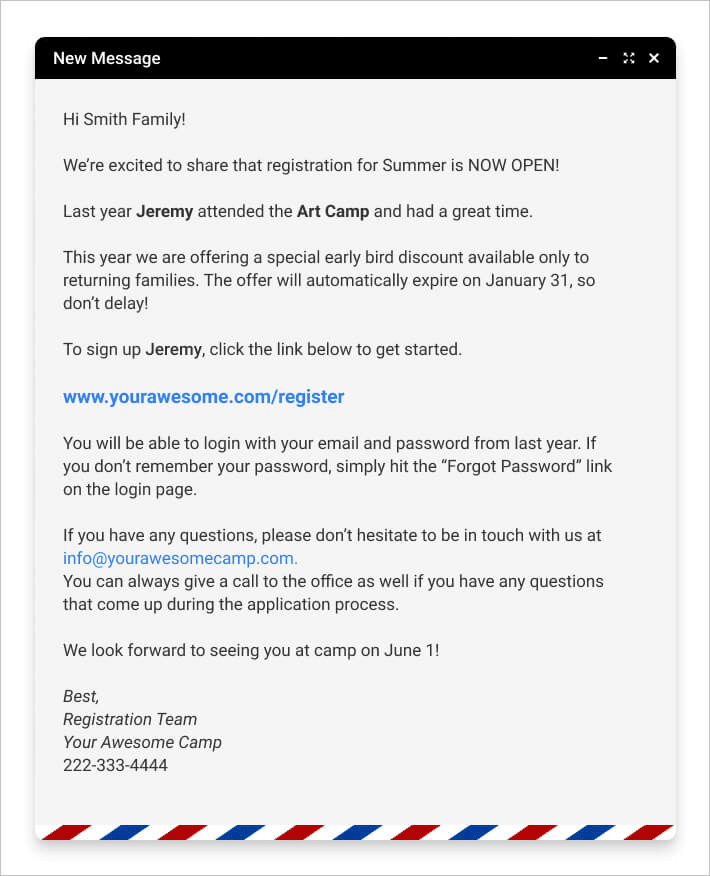
Source: Regpack
Digital Check-In
Digital check-in, which is usually done using an event app via contactless check-in kiosks, is another rising event management technology trend.
In fact, it’s predicted that there will be 33 billion digital ticket sales in 2023—a 62% increase from 2021.
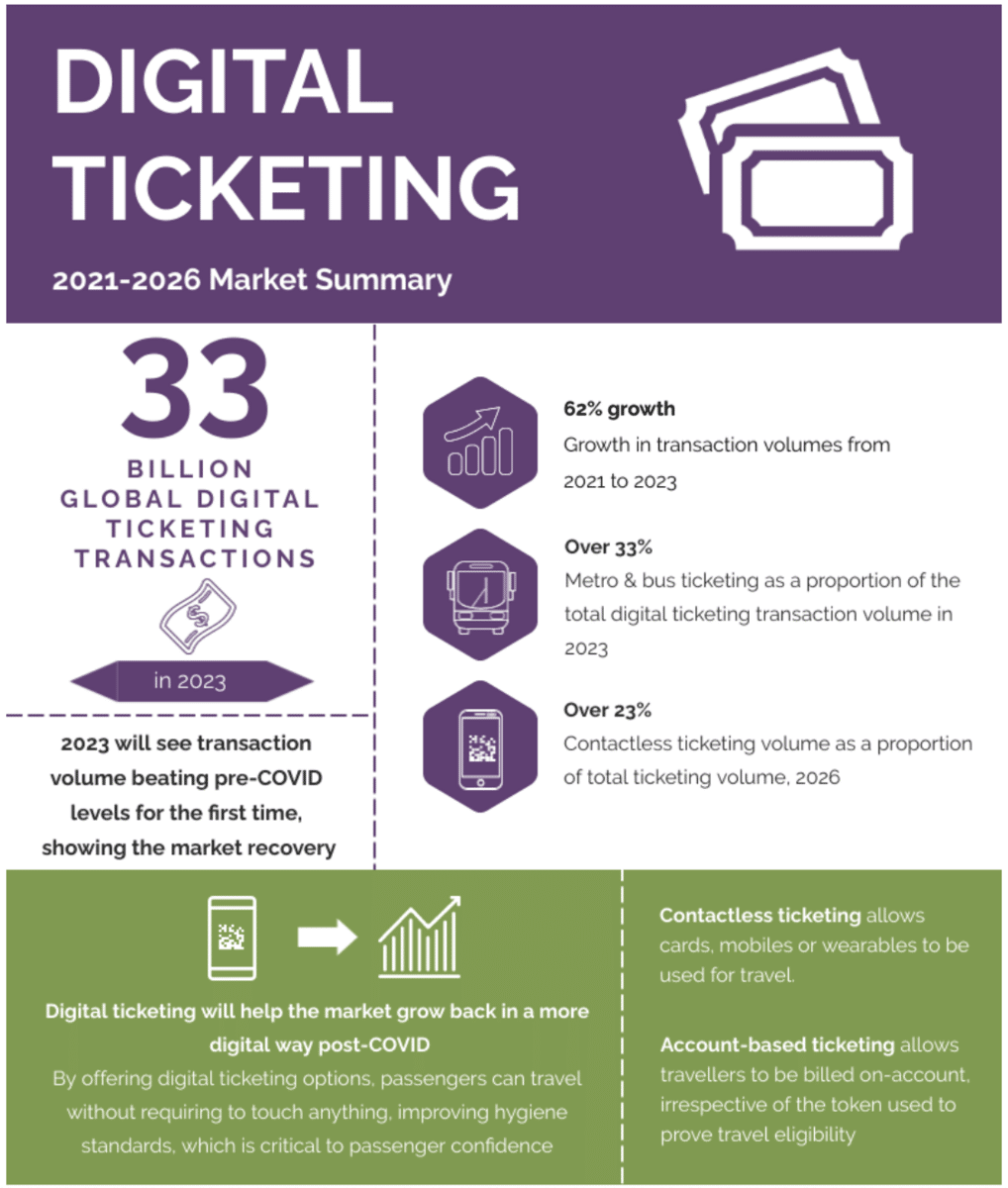
Source: Juniper Research
It’s easy to see why contactless check-in became more popular during a global pandemic, but the trend comes with many other benefits as well. As Nolan Ether writes for WebEx Events:
“Contactless check-in not only enhances safety and health measures, but it’s also much easier and faster than traditional check-in procedures. That means you can finally say goodbye to long lines and bottlenecks.”
Using digital ticketing, attendees can purchase tickets online and save them to their mobile wallets.
Instead of needing to print and keep track of paper tickets, guests can simply scan their digital tickets to enter the venue.
This easy scan-and-go entry process helps lines move faster and reduces the frustrating delays that can often happen in traditional check-in lines.
Not only will guests begin the event with a positive experience, but you won’t need to allocate as much staff and effort towards checking in your guests.
Live Streaming
Thanks to developments in live streaming technology, an increasing number of in-person events are being simultaneously live-streamed.
Like many recent technology developments, live streaming exploded in popularity during the pandemic.
But event organizers and attendees alike appreciate its potential—meaning that live streaming is another trend that’s likely here to stay.
In fact, according to one survey by LiveStream and New York Magazine, more consumers would rather watch a live stream from a brand than consume other types of content.
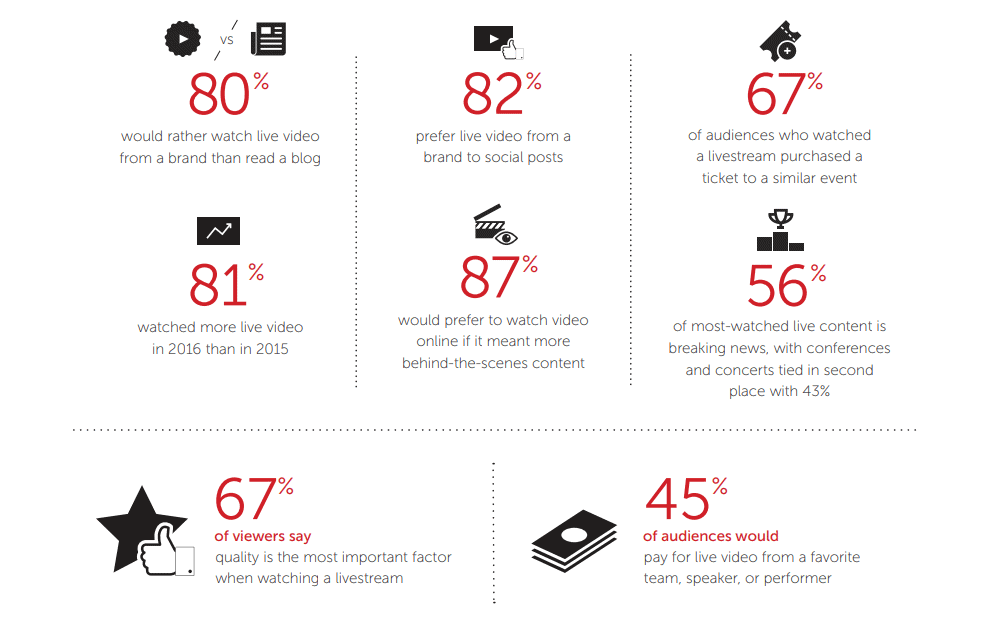
Source: Findstack
Thanks to the increased use of live streaming for in-person events, attendees that otherwise wouldn’t be able to attend due to distance or scheduling issues can easily tune in remotely.
And live streaming also makes in-person events accessible to those who might be unable to attend due to their health or disability.
Live streaming helps make events accessible to more attendees, regardless of their location or physical condition.
Of course, offering hybrid events with both in-person and virtual tickets means you need a ticketing solution that’s flexible enough to handle complex registration flows.
For example, with Regpack, you can create multiple ticketing options and a custom registration flow that uses conditional logic to create a personalized registration and payment process for each attendee.
Live Translation
The increased global interconnectivity through virtual event technology makes it easier than ever to scale events—but language barriers can still present a challenge.
If you want to appeal to a wider audience, it’s difficult to overstate the importance of breaking down language barriers at events.
Live translation technology makes events accessible to a wider audience around the world, thus giving event organizers an edge over the competition.
Many large platforms like Google, Microsoft, and Zoom have introduced real-time translation services to help world travelers and meeting attendees alike communicate more easily.
There’s also a growing number of startups and SaaS tools dedicated to providing live translation for meetings and events, including:
- KUDO
- Interprefy
- Interactio
- Clevercast
- Stenomatic.ai
The translation and interpretation services industry is experiencing rapid growth. In fact, it’s estimated that the industry revenue will reach $4.73 billion by 2023.
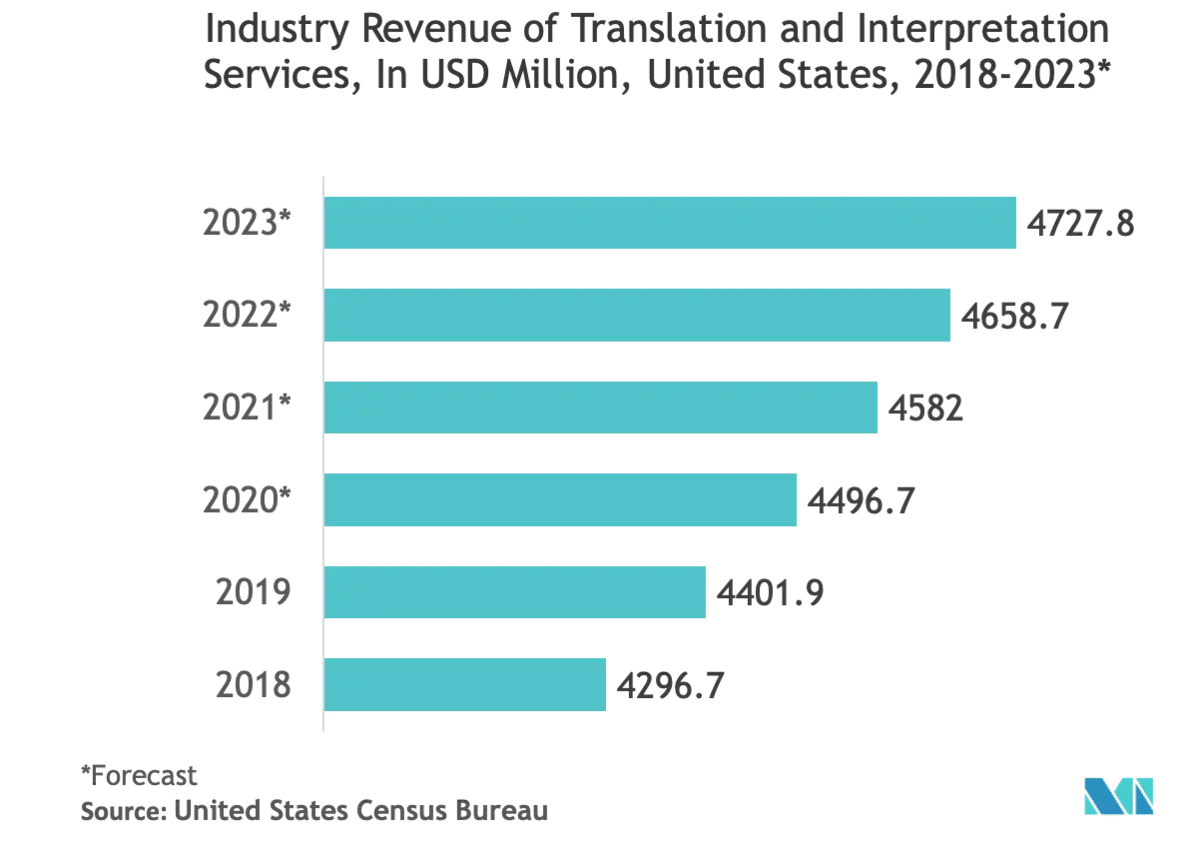
Source: Mordor Intelligence
When used at events, these platforms translate the presenter’s speech into listeners’ native languages, making it that much easier for each virtual attendee to get the most out of their experience.
Not only does translation technology invite a wider global audience, it also makes it possible to invite a variety of language-speakers to present at events.
Having a greater pool from which to draw speakers can make events unique, engaging, and reflective of the global community.
And event organizers can provide this invaluable feature to attendees without needing to rely on third-party interpreters.
While human interpreters have their own advantages over AI-based translation tech, the logistics of live human interpreters can still be difficult to handle when multiple languages are involved.
When each virtual attendee hears the language of their choice in their own speakers, it cuts down on unwanted noise and confusion.
Virtual Reality
The use of virtual reality (VR) is another technology trend in the event industry that’s likely here to stay.
Virtual reality tools can help provide an immersive and unforgettable experience, and they make the event more engaging for both in-person and digital attendees.
Virtual reality tech at branded events has been around for a few years—in one famous example in 2017, Intel sent audience members on a VR ride that let them take a wingsuit flight over Utah’s red rock landscapes (and attend an NCAA basketball game).

Source: Intel
And the VR trend has only increased since then. A 2019 Eventbrite survey revealed that 88% of event creators planned to use virtual reality tech in the future.
And with close to one in five US consumers owning a VR headset, it’s likely that VR tech at events will become even more mainstream in the coming years.
Event planners can use VR software to immerse virtual attendees in the experience through:
- 360-degree photo and video
- Pre-event tours of the venue
- Interactive data visualizations
- Offering VR set rentals as an add-on experience for VIP guests
- Simulating in-person interaction between guests via avatars
And even though it’s still not feasible to expect every attendee to have a VR headset at home, organizers of virtual events can send VR sets to all of the event’s speakers.
Instead of renting expensive venue space, event organizers can invite speakers to interact through 3D avatars in a virtual space.
Finally, live events can benefit from VR tech as well. Vendors can set up VR booth experiences where attendees can don a headset and enter a virtual world.
Whether it’s to introduce a new product or demonstrate an element of the event’s theme, VR experiences at live events certainly make your event stand out.
QR Codes
QR codes may have felt like a passing fad a few years ago, but the pandemic quickly made them popular replacements for physical menus or other informational handouts.
Scanning a QR code lets customers get the information they need, hands—and germs—free.
In 2022, most adults have used a QR code at least once. And many consumers agree that QR codes make life easier.
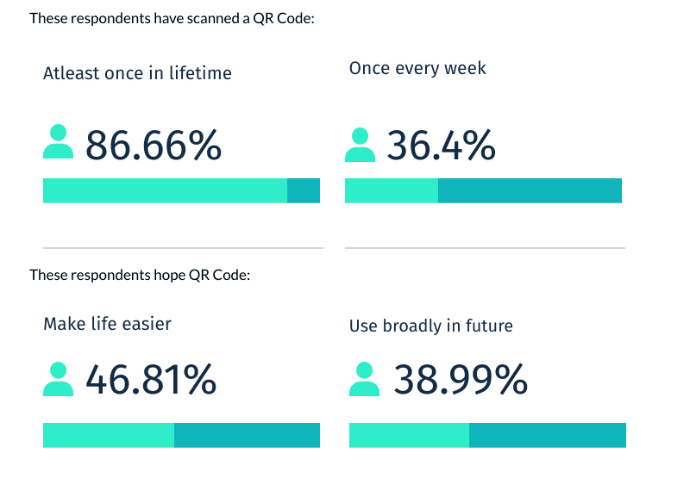
Source: Scanova
As SEO expert Damarley Robinson writes for the Aventri blog:
“QR codes are the best solution for sharing helpful content, free stuff, and marketing materials without the need for printed materials or merchandise. Leaflets, free branded merchandise, and tablets are all unnecessary, especially when digital content can be shared so quickly and easily while being a more eco-friendly and hygienic solution.”
QR codes are, in short, a great way for event organizers to take their event management to another level.
And given that third-party apps are no longer required for attendees to scan them, QR codes are an easy way to offer easy event registration, ticketing, and access to venue maps or additional event-related content.
Of course, if you add a QR code to your event flyers and postcards, be sure that your event registration landing page is strong enough to seal the deal.
You’ll need a landing page with all the right features—like a responsive design, social proof, and a clear call to action—to turn visitors into attendees.
Holograms
They may feel like a futuristic technology that only belongs in sci-fi movies, but holograms are very much possible today.
Services like Blue Guava provide integrated media and data transformation, including holography, for businesses.
As Péter Dikházi writes for Blue Guava’s blog:
“Projection technology is based on complex mirroring architectures. In the particular case of shows and events, the graphical elements of the hologram appear within the unique environment of a stage. However, we can also make real people appear on the stage using holographic projection, enabling the live debut of performers as holograms.”
The digital holography market is an emerging trend—in fact, it’s expected to grow at a CAGR of 19.8% by 2024.
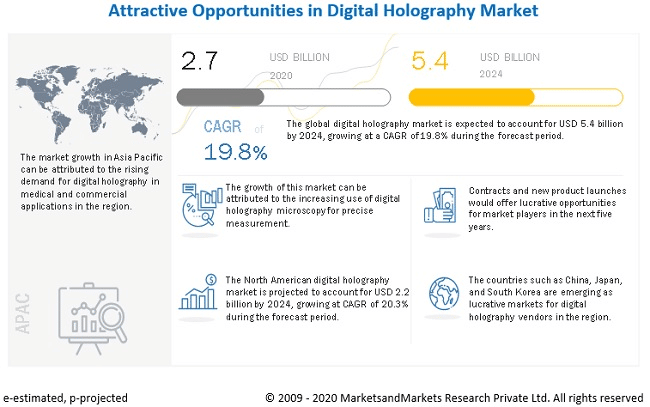
Source: Markets and Markets
When used as part of your event strategy, holograms can provide a one-of-a-kind interactive experience for attendees.
Hologram technology tends to come with all of the audio and visual tools necessary to run the presentation, and event organizers can use holograms in almost any venue.
The technology has countless uses, from product promotion and demonstration to introducing celebrity endorsements and holographic guest speakers.
Virtual Photo Booths
Finally, virtual photo booths are also an emerging trend in the event industry. The global photo booth market is expected to grow at a CAGR of 11.5% from 2020 to 2027.

Source: Maximize Market Research
These tools make it possible for both in-person and virtual event attendees to take branded pictures and videos together, thus creating a more interactive experience.
And when attendees upload their photos, GIFs, or boomerang videos to social media using the event’s branded hashtag, digital photo booths can help improve organic SEO and increase engagement for the brand.
Custom virtual photo booth experiences help increase personalization and add a human element to virtual events.
For virtual and hybrid events, personal connections and networking can be hindered by the lack of in-person interaction.
So, virtual photo booths can bridge some of that gap, allowing your audience to take themed selfies and express themselves using fun backgrounds and stickers.
Which Technology Trends Will You Adopt?
While the Covid-19 pandemic pushed digital technology forward at a rapid pace, many of the most popular innovations were already emerging—and those trends appear to be here to stay.
And it’s no wonder that these technology trends have such staying power; event organizers and attendees alike can appreciate the benefits of digital event tools.
Digital ticketing and check-in make registration easier and wait lines shorter while providing useful marketing data for brands.
And tools like live streaming, live translation, and virtual reality help make events more accessible for a global and diverse audience.
And for many events, holograms and virtual photo booths are a great way to engage audiences and create a memorable event experience.


















